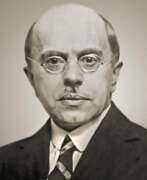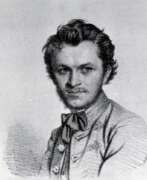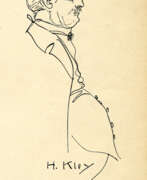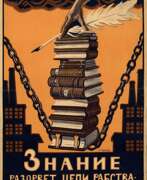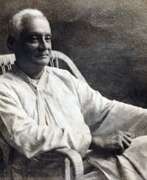Cartoonists 19th century


Manó Andrássy, full name Count Manó Andrássy de Csíkszentkirály et Krasznahorka was a Hungarian self-taught artist, caricaturist, and politician.
Count Mano Andrássy was an art collector, a member of the Hungarian Academy of Sciences, and a member of the Hungarian Parliament. He was at the origin of the Hungarian iron industry, developed iron ore mining and metallurgy, for his significant role in these endeavors he is still remembered by the name Iron Count.
Mano Andrássy left behind a diverse body of work. His caricatures of the vices of political and social life were known throughout the country. And drawings made during his travels to China and India were published in an album, he was elected a full member of the Hungarian Academy of Sciences.
He studied painting self-taught, and his most famous painting is a self-portrait. Andrássy was an avid art collector. He is also known as a philanthropist, and his collection of antiquities is part of the National Museum's collection.
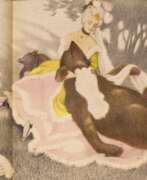

Moritz Bauernfeind was an Austrian painter, graphic artist, illustrator and cartoonist.
Moritz studied at the Academies of Fine Arts in Vienna and Munich, then at the Académie Julian in Paris, early landscapes painted in the style of Impressionism.
Bauernfeind gained fame in the early 20th century as an illustrator of political satire, notably in Meggendorfer's Humorous Notes and Der Flo. Between 1900 and 1905 he published more than 200 satirical drawings in Der Scherer and Simplicissimus, and in 1909 a series in the Illustrirten Zeitung in Leipzig. And color illustrations for fairy tales and legends were eagerly published by juvenile and many other publications. Bauernfeind's fantastic genre images with stylized figures and a touch of burlesque attract with their unusualness and mystery.


Johan Coenraad Braakensiek was a Dutch painter, illustrator and political cartoonist. For most of his career, Braakensiek worked for a number of publishers as an illustrator. However, he also found work as a political cartoonist for the magazines Geïllustreerd Politie-Nieuws, De Amsterdammer and De Groene Amsterdammer. His first work was with Geïllustreerd Politie-Nieuws where he contributed infrequently. His break and rise in popularity came in 1886 when he was made the political cartoonist for De Amsterdammer magazine. He also was affiliated with De Groene Amsterdammer magazine from 1925 to 1931. Braakensiek remains popular thanks to the books he worked on as illustrator. Books such as Van Allerlei Slag and Uit het leven van Dik Trom, which feature his art are widely known and read.


George Cruikshank was a British caricaturist and book illustrator, praised as the "modern Hogarth" during his life. His book illustrations for his friend Charles Dickens, and many other authors, reached an international audience.


Isaac Robert Cruikshank or Robert Cruikshank was a British caricature artist, illustrator and miniature portraitist.
Robert is the older brother of George Cruikshank (1792-1878) and son of Isaac Cruikshank (1764-1811), who were also caricaturists and illustrators. Robert illustrated novels with his brother, including Cervantes's Don Quixote, and the London Characters series in 1827.


Charles D'Oyly was a British public official and painter from Dacca (now Dhaka). He was a member of the Bengal Civil Service based in Calcutta, Dacca and Patna from 1797 to 1838. Although he held senior positions with the East India Company's civil service, he is best known as an amateur artist who published many books featuring engravings and lithographs featuring Indian subject matter.


Jean-Pierre Dantan the Younger was a French caricaturist sculptor; younger brother of the academic sculptor Antoine Dantan. He studied at the Paris Academy of Arts and under François Joseph Bosio. His specialty was portrait busts, in which he conveyed the external features and character of his models with amazing fidelity.
Jean-Pierre Dantantant showed a rare ability in his work to notice the comic features of their faces and reproduce them with equanimity and a sense of proportion without offending the self-esteem of the originals who posed before him.


Philibert-Louis Debucourt was a French painter, caricaturist and engraver.
Debucourt was a specialist in color printing techniques and worked mainly with aquatint. He made engravings based on his own paintings as well as those of Charles Vernet, Louis-Leopold Boileau, and Nicolas-Toussaint Charlet.
Debucourt also competed in wit with British cartoonists who were active when revolutions were raging in Europe. Debucourt depicted people admiring each other in the gardens of the Palais Royale as Paris prepared for carnage. During the Napoleonic period, French political caricature was in its infancy, and Debucourt merely mocked French manners and morals by painting satirical portraits.


Richard Dighton was a British portrait painter and caricaturist.
He studied drawing under his father, the famous caricaturist Robert Dighton (1752-1814), and was also the brother of artists Denis Dighton and Robert Dighton, Jr. Richard Dighton was best known for his many profile portraits of characters from the City and West End. He began his extensive series in 1817 and over the next ten years published over one hundred etchings. The people portrayed by Dighton are amusingly drawn and finely hand-colored, the drawings cartoonishly depicting various members of British society.
Deighton's sons Richard Jr. and Joshua were also portrait painters.


Emmanuil Alexandrovich Dmitriev-Mamonov (Russian: Эммануи́л Алекса́ндрович Дми́триев-Мамо́нов) was a Russian artist of the mid-19th century. He is known as a painter, graphic artist, portraitist, book designer, caricaturist and art historian.
Emmanuil Dmitriev-Mamonov became famous for his picturesque and graphic portraits of cultural figures of his time, in particular the writer Nikolai Gogol. His works are still used as illustrative material thanks to their outward resemblance to the models. The master was the son of the famous battle-painter Alexander Ivanovich Dmitriev-Mamonov.


Gustave Doré, full name Paul Gustave Louis Christophe Doré, was a French painter, sculptor, graphic artist, illustrator, and cartoonist.
Doré was very industrious and prolific: he created more than 10,000 illustrations for art books as well as the Bible. He decorated the works of Rabelais, Balzac, Cervantes, Dante and Milton with his lively drawings, making Doré's name famous. He had a special gift for illustrating nature and fairy tales.


Richard Doyle was a British illustrator of the Victorian era. His work frequently appeared, amongst other places, in Punch magazine; he drew the cover of the first issue, and designed the magazine's masthead, a design that was used for over a century.


Pavel Andreyevich Fedotov (Russian: Павел Андреевич Федотов), a pioneering Russian realist painter, was born on July 4, 1815, in Moscow, Russia. He is celebrated as the founder of Russian genre painting and critical realism, capturing the essence of Russian society with sharp satire and insight. His works, including notable pieces like "The Major's Marriage Proposal" and "The Gamblers," reflect a keen observation of social conditions and human interactions, often infused with humor and moral critique.
Fedotov's artistic journey began in the military, where he served as an officer before fully dedicating himself to art. His transition from military life to art was marked by his attendance at the Imperial Academy of Arts in St. Petersburg. Initially working with pencil and watercolor, he later shifted to oils in 1846, a medium through which he achieved great success and recognition.
Tragically, Fedotov's life was cut short when he died in a mental clinic in 1852 at the age of 37, following a period of intense psychological distress. Despite his brief career, his legacy lives on, influencing future generations of Russian artists and continuing to captivate audiences with his vivid portrayals of 19th-century Russian life.
For those interested in exploring the profound depth and enduring impact of Fedotov's work, signing up for updates on exhibitions and auctions of his art could provide valuable insights and opportunities to engage with his masterpieces.


Lyonel Charles Adrian Feininger was an American-German artist renowned for his unique integration of Expressionism, Cubism, and Bauhaus principles. His body of work, which spans several critical decades in modernism's development, is celebrated for its distinctive blend of architectural and nautical motifs, articulated through planar shifts and jagged lines of Cubism, with a vibrant Orphist color palette.
Lyonel Feininger's journey as an artist began in earnest when he was 36, becoming a pivotal figure in various German expressionist groups and a founding member of the Bauhaus, where he led the printmaking workshop. His art, which also includes significant contributions to caricature and photography, explores the intricate relationship between humanity and industrialization, evident in his depictions of architectural and mechanized forms.
His work was subject to Nazi criticism, being labeled as "degenerate," which led to his return to the United States, where he continued to evolve his artistic style. Posthumously, Lyonel Feininger's art has been the focus of several retrospectives, and his pieces, like "Jesuits III," continue to fetch high figures at auctions, underscoring his lasting impact on the art world.
Notably, Lyonel Feininger's "Cathedral" woodcut, representing the Bauhaus's utopian vision, remains one of his most iconic works, symbolizing the integration of art and craftsmanship with its avant-garde yet traditional approach. His legacy is further carried by his sons, Andreas and T. Lux Feininger, who also made their marks in the arts.
For collectors and art and antiques experts, Feininger's work represents a fascinating intersection of various art movements and a testament to the enduring nature of expressive and innovative artistry. To stay updated on new product sales and auction events related to Lyonel Feininger, consider signing up for updates, ensuring you're informed about the latest opportunities to engage with his enduring legacy.


Friedrich Fleischmann was a German painter of the first third of the 19th century. He is known as a painter, graphic artist, printmaker and caricaturist.
Fleischmann studied engraving in Nuremberg and made a significant contribution to the local engraving school by introducing the technique of steel engraving. He produced some 1,900 works, including portraits of contemporaries and historical figures. Biographical sources state that the artist was banished from the city after a popular unrest caused by one of his caricatures and his house was destroyed by a mob.


Jean-Louis Forain was a French painter, graphic artist and book illustrator.
Jean-Louis Forain began his career as a cartoonist. He worked for several Parisian magazines including Le Monde Parisien and Le rire satirique. Later studied at the École des Beaux-Arts with Jean-Baptiste Carpeaux and Jean-Léon Gérôme. He was friends with Paul Verlaine, Arthur Rimbaud, Claude Monet, Edouard Manet and Edgar Degas.
Jean-Louis Forain is best known for his keen observations on Parisian society, especially its social and political scenes. His subjects were often cabarets, theatres, cafés and the bustling streets of Paris. He depicted life of the working class, the bourgeoisie and the upper class with a satirical and critical eye.
Forain's artistic style was characterised by bold brushwork, strong use of line and a limited colour palette. His works often depicted scenes with dynamic movement, conveying the energy and atmosphere of the moment. His paintings were often theatrical in character, reflecting his interest in the world of entertainment.


Paul Gavarni, real name Hippolyte Sulpice Guillaume Chevalier, was a French painter, cartoonist, illustrator, and a prominent 19th-century satirist.
Beginning his career as an assistant engineer, he showed signs of his future genius in the late 1820s as a fashion designer and illustrator. His talent for caricature and satirical art, however, led him to the editorship of Les Gens du Monde in 1835. Paul Gavarni, one of the smartest caricaturists, had no equal in drawing, capturing the follies and foibles of his time. He developed close friendships with many other leading artists and contemporary writers, including Honoré Balzac, Charles Dickens and William Maykpis Thackeray. His work was collected by Queen Victoria, as well as by Edgar Degas and Vincent van Gogh.
Gavarnie's long association with the popular magazine Le Charivari, with which Dumier and other cartoonists of the time also collaborated, was the pinnacle of his career. Working continuously from 1838 to 1844, he produced more than 900 engravings illustrating secular Parisian life with great wit, charm, and satire. He also illustrated the novels of Balzac and Eugène Sue and the short stories of Hoffmann. In addition to satirical works, Gavarni also distinguished himself in portraiture and sketches.
But it was not only in social circles that Gavarni revolved, where he was admired. In 1847 he spent a year in London, painting the inhabitants of the poor quarters around Whitechapel and producing some of his best work there.


James Gillray was a British artist and caricaturist.
James Gillray was the most popular caricaturist of the second half of the 18th century. From about 1775 to 1810, he created about 1,000 political and social caricatures, often violent and even obscene. These include finished portrait drawings of the rich and famous, comic caricatures of bumbling people, and satirical caricatures of British political and social life during the Napoleonic era.
James Gillray's political cartoons are a historical record of the latter part of George III's reign. They were widely circulated in Britain and Europe and were produced as pamphlets. They sharply ridicule George III, the Queen, the Prince of Wales, Charles James Fox, Edmund Burke, William Pitt and Napoleon.


Richard Graef was a German painter, graphic artist, illustrator and cartoonist.
Graef studied painting at Hans von Hayek's school in Dachau, and then went to Paris for further studies, and afterwards opened his own studio in Dachau with his wife. Graef achieved fame as an illustrator and cartoonist, whose subjects - human vices and weaknesses, the relationship of the rich and poor and so on. He is one of the most famous and prolific cartoonists of the satirical weekly Simplicissimus and one of the oldest members of the Dachau artist colony at the time.
Graef also mastered wood engraving, but over time turned increasingly to watercolor and oil painting, creating still lifes and portraits as well as landscape paintings.


Jean Ignace Isidore Grandville, real name Gerard, was a French painter of the second third of the 19th century. He is known as a draughtsman-illustrator and caricaturist.
Grandville-Gerard came from a family of artists and actors, a stage name he adopted for himself. His humor and rich imagination made him one of the leading caricaturists of his time. Depicting contemporary mores, he endowed animals and plants with human vices and people with the appearance of animals.
Grandville illustrated many classic literary works, including La Fontaine's Fables, Robinson Crusoe, Don Quixote, and Gulliver's Travels, becoming famous for his unique and vividly creative interpretations.


Albert Guillaume was a French artist, cartoonist, illustrator, and master of the poster.
Guillaume was a prolific illustrator: he worked for magazines, books, and almanacs, and his satirical drawings were published in Parisian humor magazines. He was also a painter and designer of theater posters and advertising posters. Working for the large Parisian printing company Camis, he designed a series of highly successful posters for commercial goods.


Albert Pieter Hahn was a Dutch political cartoonist, poster artist and book cover designer; well known for his socialist and antimilitaristic viewpoints. Some of his drawings, especially those of the railroad strikes of 1903, have been regularly used in history textbooks. His son-in-law, Albert Hahn jr., was also an artist, so he is sometimes referred to as "Sr.".


Edmund Harburger was a German artist of the last third of the nineteenth and early twentieth centuries. He is known as a painter, graphic artist, illustrator, and caricaturist.
Harburger became famous for more than 1,500 humorous drawings for the magazine Fliegende Blätter. He also created book illustrations and political cartoons. After living for two years in Venice, the artist practiced there copying the works of the old masters. His exhibitions were held in various European cities, including Paris, Berlin and Munich. His works are kept in museums in various countries, including the New Pinakothek in Munich and museums in Gdansk, Leipzig, Prague and other cities.


William Heath was a British artist, illustrator and cartoonist.
Early in his career, Heath did illustrations for anthologies and albums on military and historical themes, and created many battle scenes. But from about 1820 he concentrated on satire and published drawings under the pseudonyms Paul Pry and Argus.
William Heath was one of the founders of one of England's first cartoon magazines, Glasgow's Looking-Glass (later renamed the Northern Looking-Glass). With his cartoons, Heath responded to all the topical events of his time, be it politics, fashion, culture, or the everyday life of the common man.
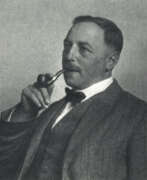

Thomas Theodor Heine was a German-Swedish artist of late nineteenth and early twentieth centuries of Jewish origin. He is known as a painter, draftsman, illustrator and writer.
Heine co-founded the popular German satirical weekly Simplicissimus, where he printed his drawings and caricatures. He also collaborated with the magazines Flying Pages and Youth, illustrated books, and created advertising posters and erotic drawings. After the Nazis came to power, the artist fled to Sweden, where he obtained citizenship. His works were presented at a retrospective anniversary exhibition in Stockholm in 1947, a year before Heine's death.


Adolf Hengeler was a German artist and illustrator, renowned for his distinctive style that beautifully merged humor with meticulous detail. Born on February 11, 1863, in Kempten, Allgäu, Hengeler's journey in the arts led him to Munich, where he left an indelible mark on the art and culture of the era.
Hengeler's body of work is diverse, encompassing applied graphics, caricatures, and picture stories. His graphic work, ranging from airy color drawings to precise ink strokes, has often been compared to Wilhelm Busch for its unique charm and precision. Notably, Hengeler regularly contributed to the "Fliegende Blätter" and created popular publications like the "Münchner Kinderfibel" and the "Kriegstagebuch 1914/15".
In painting, Hengeler focused on landscapes, often featuring cherubs and mythical creatures, and idyllic scenes of people in landscapes. His paintings are characterized by earthy brown tones, highlighted by bright local and pastel tones in flesh, clothing, or flowers, capturing the beauty of nature in Oberbayern and Allgäu. In his later years, Hengeler turned to Christian legends and biblical figures, adding a spiritual dimension to his natural scenes.
Hengeler's legacy is preserved in the Museum der Stadt Kempten, as per the bequest of his grandson, the art historian Peter von Bomhard. The museum houses Hengeler's personal and artistic belongings, including furniture and portraits, in a dedicated Hengeler Room.
For collectors, auctioneers, and experts in art and antiques, Adolf Hengeler's work offers a unique window into the culture and art of his time. His contributions to the German art scene, especially through his distinctive style and thematic diversity, make his works highly valued and sought after.
For those interested in staying updated on new product sales and auction events related to Adolf Hengeler's works, we invite you to sign up for our updates. This subscription is tailored specifically to keep you informed about relevant events and opportunities in the world of Adolf Hengeler's art.
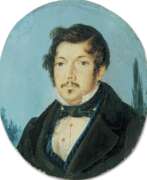

Hieronymus Hess was a Swiss painter and artist from Basel.
Himself being a Protestant, religion played a role in several of his paintings. He painted and drew several well known scenes of the Swiss political and cultural life. In his later career he also became a stained glass artist.


Angelo Jank was a German animal painter, illustrator and member of the Munich Secession. He was the son of the German painter Christian Jank and specialized in scenes with horses and riders. For many years, he was also employed as an illustrator for the magazines Jugend and Simplicissimus, And he was also an instructor at the Academy of Fine Arts. In addition to his canvases, he painted murals at the Justizpalast and scenes from history at the Reichstag building in Berlin. His work was also part of the painting event in the art competition at the 1936 Summer Olympics.


Walter Francis Kuhn is an American artist who occupies a place in American art history as an accomplished caricaturist, draftsman, engraver, sculptor, and painter. His cycle of portraits of circus and vaudeville performers is world famous. He was also the organizer of the famous 1913 Armory Exhibition, which was America's first large-scale introduction to European modernism.


Theodore Lane was a British miniature painter, caricaturist and engraver.
Lane became known as a painter of watercolor portraits and miniatures, but his real talent was in satire. He produced a humorous series of thirty-six drawings entitled The Life of an Actor, which was published in 1825, often working on sports material, especially in collaboration with Piers Egan.
As a political pamphleteer, Theodore Lane drew a series of satirical depictions of Queen Caroline and George IV in caricature and grotesque form in 1820.


Mikhail Osipovich Mikeshin (Russian: Михаил Осипович Микешин) was a Russian painter and sculptor of the second half of the 19th century, a representative of the realist trend in art. He is best known for creating monumental monuments of the historical genre.
Mikhail Mikeshin, a native of the Russian countryside, achieved success at a young age. He was 23 years old when one of his paintings was bought by Emperor Nicholas I, who later invited him to teach his daughters painting. At the age of 24 years Mikeshin won the competition to build a monument in Novgorod, dedicated to the millennium of Russia. In subsequent years, he created many monuments, which were installed in different cities of Russia. Among his famous works is the monument to Bogdan Khmelnitsky in Kiev, which had long become a symbol of the Ukrainian capital. Mikeshin received orders from other countries to build monuments and won international competitions.
Mikeshin worked fruitfully in other genres of art. His cartoons are regularly published in satirical magazines, and publishers are constantly asking him to illustrate the works of Russian writers. In addition, until his death Mikeshin continued to paint pictures, including portraits and genre works.


Gaspard-Félix Tournachon, known by his pen name Nadar, is a French photographer, cartoonist, journalist, writer and balloonist.
Throughout his career, Nadar shot portraits of many famous personalities, including writers, artists, musicians and politicians. Among them were Victor Hugo and Charles Baudelaire, Sarah Bernhardt and George Sand. Nadar's portraits were in great demand as he had a unique ability to reveal the inner essence of his subjects, revealing their character and emotions.
In addition to portraiture, Nadar was an aerial photographer, using hot air balloons to capture breathtaking images from high above. His boldness and adventurous spirit led him to explore new perspectives and techniques, making a significant contribution to the development of aerial photography. In 1858, he became the first person to take aerial photographs.


Aleksander Orłowski (Russian: Александр Осипович Орловский), a renowned Polish painter and sketch artist, was born on March 9, 1777, in Warsaw, within the Polish-Lithuanian Commonwealth. His journey into the arts began under challenging circumstances; he was the son of a tavern-keeper and his family was not wealthy. His early promise in art was nurtured by noble patron Izabela Czartoryska, who financed his initial education under the guidance of artist Jan Piotr Norblin.
Orłowski's artistic journey intersected with his military service during the Kościuszko Uprising, a major revolt against Imperial Russia and Prussia in 1794. This period of conflict significantly influenced his later works, which often depicted military scenes and the daily life of soldiers. After the partitions of Poland, Orłowski moved to Saint Petersburg in 1802, where he became a seminal figure in the development of lithography in the Russian Empire.
His oeuvre includes a wide array of subjects, from battle scenes to cultural depictions of everyday life in both Poland and Russia. Notable works such as "Battle Scene" and "Cossack Fighting Off A Tiger" showcase his skill in capturing dynamic movement and drama. His works are preserved in esteemed institutions such as The Russian Museum and The Tretyakov Gallery, highlighting their historical and artistic value.
Orłowski's impact extended beyond the canvas; he was also mentioned in literary works by notable authors like Adam Mickiewicz and Alexander Pushkin, which underscores his cultural significance in the 19th century.
For collectors and experts in art and antiques, Aleksander Orłowski's works represent a crucial segment of Eastern European art history. To stay informed about new discoveries or auction events related to his works, consider subscribing for updates. This subscription ensures you receive timely information tailored to your interests, directly relating to new sales and significant events around Orłowski's art.


Edmond Marie Petitjean was a French painter. He was known for his seascapes and rural landscapes.
Petitjean's paintings are characterized by bright, vibrant colours and free strokes that convey a sense of movement and atmosphere.
Petitjean's work was exhibited widely during his lifetime, including at the Salon des Artistes Indépendants and the Salon d'Autumn in Paris. Like many artists of the period, he also created illustrations and caricatures for periodicals. He was the recipient of numerous awards and prizes for his work.


Harold Septimus Power, usually known as H. Septimus Power or H. S. Power, was a New Zealand-born Australian artist, who was an official war artist for Australia in World War I. He exhibited in 1899 with the Melbourne Art Club and soon after moved to Adelaide where he worked as an illustrator and political cartoonist. In 1904, he was commissioned by the trustees of the Art Gallery of South Australia to paint an animal scene. He was a member of the Royal Institute of Oil Painters and the Society of Animal Painters. He also exhibited at the Royal Academy of Arts. After war broke out in the summer of 1914, the Australian government appointed official war artists to depict the activities of the Australian Imperial Force in the European theater of war. Power was appointed in 1917 and was attached to the 1st Division, A.I.F. from September to December of that year and then again in August the following year. Official War Artist during the First World War and was renowned for his depiction of animals, in particular horses, on the field of battle.


Frederick William Rolfe (1860–1913), also known by his self-bestowed title "Baron Corvo," was an English writer, artist, and photographer whose life and work were marked by eccentricity and a persistent quest for recognition. Born on July 22, 1860, in Cheapside, London, Rolfe was the son of a piano maker. He left formal education at fourteen to pursue a career in teaching, holding a brief tenure at The King's School in Grantham.
In 1886, Rolfe converted to Roman Catholicism, a decision that profoundly influenced his personal and professional life. Aspiring to the priesthood, he enrolled at St. Mary's College, Oscott, in 1887 and later at the Scots College in Rome. However, his unconventional behavior and apparent lack of commitment led to his dismissal from both institutions, leaving him embittered and with an unfulfilled clerical ambition.
Following these setbacks, Rolfe turned to writing and art. His literary debut, "Stories Toto Told Me" (1898), is a collection of tales reflecting his fascination with Italian culture and Catholicism. This work was followed by "In His Own Image" (1901) and "Chronicles of the House of Borgia" (1901), showcasing his diverse interests and narrative skill.
Rolfe's most acclaimed novel, "Hadrian the Seventh" (1904), is a semi-autobiographical fantasy in which an Englishman, much like Rolfe himself, is unexpectedly elected Pope. The novel delves into themes of unfulfilled potential and personal vindication, mirroring Rolfe's own experiences with the Catholic Church.
Despite his creative output, Rolfe struggled with financial instability and strained relationships. His patronage from Caroline Shirley, Duchess Sforza Cesarini, provided some support, but his often abrasive personality led to conflicts, notably with Father Charles Sidney Beauclerk during his time in Holywell. These disputes further isolated him from potential allies and patrons.
In addition to writing, Rolfe was an accomplished photographer and painter, though these pursuits did not bring him significant financial success. His later years were spent in Venice, a city that inspired his posthumously published work, "The Desire and Pursuit of the Whole" (1934). Rolfe died there on October 25, 1913, at the age of 53.
Rolfe's life and career were characterized by a complex interplay of talent, ambition, and personal idiosyncrasies. His contributions to literature, particularly through "Hadrian the Seventh," have secured him a place in English literary history, while his tumultuous relationships and self-styled nobility continue to intrigue scholars and readers alike.


Jan Bogumil Rosen (Russian: Ян Богумил Розен) was a Polish painter born on October 16, 1854, in Warsaw, and passed away on November 8, 1936, in the same city. He specialized in battle scenes and was known for his meticulous attention to detail, especially in depicting horses and military uniforms.
Rosen began his artistic education under the guidance of Franciszek Kostrzewski and later studied at the Academy of Fine Arts in Munich. He also trained under renowned painters Jean-Léon Gérôme and Isidore Pils at the Académie des Beaux-Arts in Paris. Throughout his career, Rosen's work was exhibited widely and garnered significant attention, particularly in Munich and Warsaw. One of his notable works, "Contest of Carriages at the Ujazów Castle Square," exemplifies his skill in portraying dynamic scenes with great precision.
In addition to his battle scenes, Rosen also produced genre paintings and portraits. His work received recognition from various prestigious institutions, and he served as a court painter for Tsar Alexander III of Russia. Despite spending much of his career abroad, Rosen's work remained deeply connected to Polish themes and history.
For collectors and enthusiasts interested in Jan Bogumił Rosen's works, subscribing to updates about new product sales and auction events is highly recommended. Stay informed about opportunities to acquire pieces by this masterful artist.


Thomas Rowlandson was an English artist and caricaturist of the Georgian Era, noted for his political satire and social observation. A prolific artist and printmaker, Rowlandson produced both individual social and political satires, as well as a large number of illustrations for novels, humorous books, and topographical works. Like other caricaturists of his age such as James Gillray, his caricatures are often robust or bawdy. Rowlandson also produced highly explicit erotica for a private clientele; this was never published publicly at the time and is now only found in a small number of collections. His caricatures included those of people in power such as the Duchess of Devonshire, William Pitt the Younger and Napoleon Bonaparte.


Charles Lorraine Smith or Charles Loraine was a British artist, politician and sportsman.
Lorraine was an avid horseman, an excellent hunter and an amateur painter at the same time. Contemporaries wrote that his paintings were the result of a happy combination of his hunting experience and artistic talent. Indeed, his works depicting hunting scenes and horses were very successful. Lorraine also drew caricatures mocking some of the customs of hunters, such as when they smoke while fox hunting.
Charles Lorraine Smith was a Member of Parliament and High Sheriff of Leicestershire.


Joseph Edward Southall was a British painter and leader of the Birmingham Group of Craftsmen Artists.
At the age of 21, while traveling in France and Italy, Southall was fascinated by Italian Renaissance painters. He later created many large tempera paintings, mostly of mythological and religious subjects, which were exhibited throughout Europe as well as in the United States. The artist also painted landscapes and many portraits in watercolor and oil.
With the outbreak of World War I, Southall became more involved in the anti-war struggle, writing pamphlets and drawing cartoons for books and magazines. Along with other members of the Birmingham Group, Southall also practiced various crafts including murals, furniture decoration, lace, book illustration and prints.


Carl Strathmann was a German painter in the Art Nouveau and Symbolist styles.
He was a member of the artists' association, Allotria and, briefly, the Munich Secession, but left after some unspecified disputes. In 1904, together with René Reinicke, Hans Beat Wieland, Rudolf Köselitz, Wilhelm Jakob Hertling, and several others, he co-founded the Munich Watercolorists' Association. He exhibited with the Deutscher Künstlerbund and the Berlin Secession, which held a major showing of his work in 1917.


Sergey Ivanovich Svetoslavsky (Russian: Сергей Иванович Светославский) was a Russian Ukrainian and Soviet artist of the late 19th - first third of the 20th centuries. He is known as a painter-landscaper and graphic-caricaturist.
Sergey Svetoslavsky in his works created a lyric-epic image of Ukraine. Most of all he was attracted by the urban landscapes of Kiev and rural landscapes around the city. One of his favorite subjects were views of the Dnieper. The master was a member of the Association of Traveling Art Exhibitions and his city landscapes were done mainly in gray-brown tones, which was typical for the Itinerants.


Wolfgang-Adam Töpffer was a Swiss and French painter, printmaker, caricaturist, and draftsman.
He studied at the Ecole des Beaux-Arts in Paris and painted landscapes and portraits. Later he became interested in plein air landscapes and excelled in this art. Töpffer is also known as a talented draughtsman and political cartoonist. His son Rudolf Töpffer also became a caricaturist.


August von Pettenkofen, born August Xaver Carl von Pettenkofen, was an Austrian painter, illustrator and caricaturist.
He studied painting at the Vienna Academy of Fine Arts and painted genre works in the Biedermeier style. During the revolution of 1848 Pettenkofen became a war artist and for a long time created watercolors and lithographs depicting Austrian military uniforms. And later in Paris he was drawn to the Barbizon school. The artist's paintings from that period are filled with sincerity and empathy towards the peasants depicted.


Franz Sigmund von Wagner was a Swiss painter, caricaturist, engraver and historian.
Wagner contributed to art magazines, traded in art, was a member of the Bern Society of Artists, and assisted the government of Bern in building a collection of paintings, the foundation of which he laid. Wagner, who was fascinated by the history of the Swiss Confederation and Old Bern, was a member of the Bern Society for the Study of History, founded in 1811, and wrote historical studies.
Sigmund Wagner is also known for his aptly critical caricatures on social topics.


Josef Wackerle was a German sculptor. Educated in Munich, he became the artistic director of the Nymphenburg Porcelain Manufactory at a young age. Wackerle's influence extended beyond porcelain, as he contributed significantly to public art and architecture, particularly in his hometown. His works include various monuments, sculptures, and reliefs that demonstrate his commitment to integrating art within public spaces and everyday life.
Josef Wackerle's talent was recognized internationally, and his sculptures played a part in the art competitions at the 1928 and 1932 Summer Olympics. Despite the complex historical context in which he worked, including the Nazi era, Wackerle continued to receive commissions after World War II, demonstrating his art's enduring appeal. He contributed to the architectural and cultural fabric of Garmisch-Partenkirchen through numerous public artworks, including fountains, monuments, and building decorations.
For collectors and art experts, Josef Wackerle's work represents a blend of technical skill and a deep connection to Bavarian cultural identity. His contributions to porcelain art, particularly with Nymphenburg, highlight his versatility and innovation in working with various mediums.
If you're interested in staying updated on Josef Wackerle's works, particularly in the context of auctions and new discoveries, consider signing up for updates. This subscription will ensure you're informed about new sales and auction events related to Wackerle's art, providing valuable insights for collectors and enthusiasts alike.


James Brydges Willyams was a British artist, draughtsman and satirical writer.
Lt. Colonel Williams is known for his moralizing work A Compendious Treatise on Modern Education, in which he mocks the ills of modern society, from child hoodlums and teenage drunks, careless nannies to university students and professors. Williams signed his texts and drawings with the pseudonym Joel McCringer. And the artist Thomas Rowlandson (1756-1827), who printed the engravings from Williams's drawings, infused the figures with his characteristic elegance.


George Murgatroyd Woodward, nicknamed Mustard George, was a British cartoonist and satirical writer.
His caricatures were printed in humor magazines and published as prints. Woodward mocked both newfangled trends, human vices, including drunkenness, and politicians, as well as illustrating and decorating books.


Benjamin Zix was a French painter, engraver, and illustrator.
He is known for accompanying Napoleon's military campaign, producing many battlefield drawings. Zix also painted portraits, mythological scenes, allegories, landscapes, and caricatures.










